Kangaroo Rat Burrows

All 20 kangaroo rat species (Dipodomys spp.) den in ground burrows but there is surprising variation in the burrow system from species to species. Of course they differ in terms of entry hole size – larger species generally make larger entry holes. But their burrows also differ in other ways: the number of entry holes, the degree of complexity underground, the location in the open vs. under a shrub, and whether or not the soil over the burrow system is mounded. I’ll compare the burrows of 3 of the species I encountered while tracking and camera trapping in the desert Southwest. These three are among the broadest ranging species, so they are more likely to be encountered. (Some species are limited to a tiny geographic area.) I hope this will inspire an appreciation for the diversity and complexity of these humble, seed-eating rodents, and pique your curiosity about them next time you walk the desert.
First I want to say that most burrows excavated by kangaroo rats are, at any given time, not occupied by kangaroo rats. They may be in use by other animals or they may be temporarily unoccupied. This is an important point for the camera trapper. To confirm presence of your target species, you must look for sign of recent use and kangaroo rat tracks.
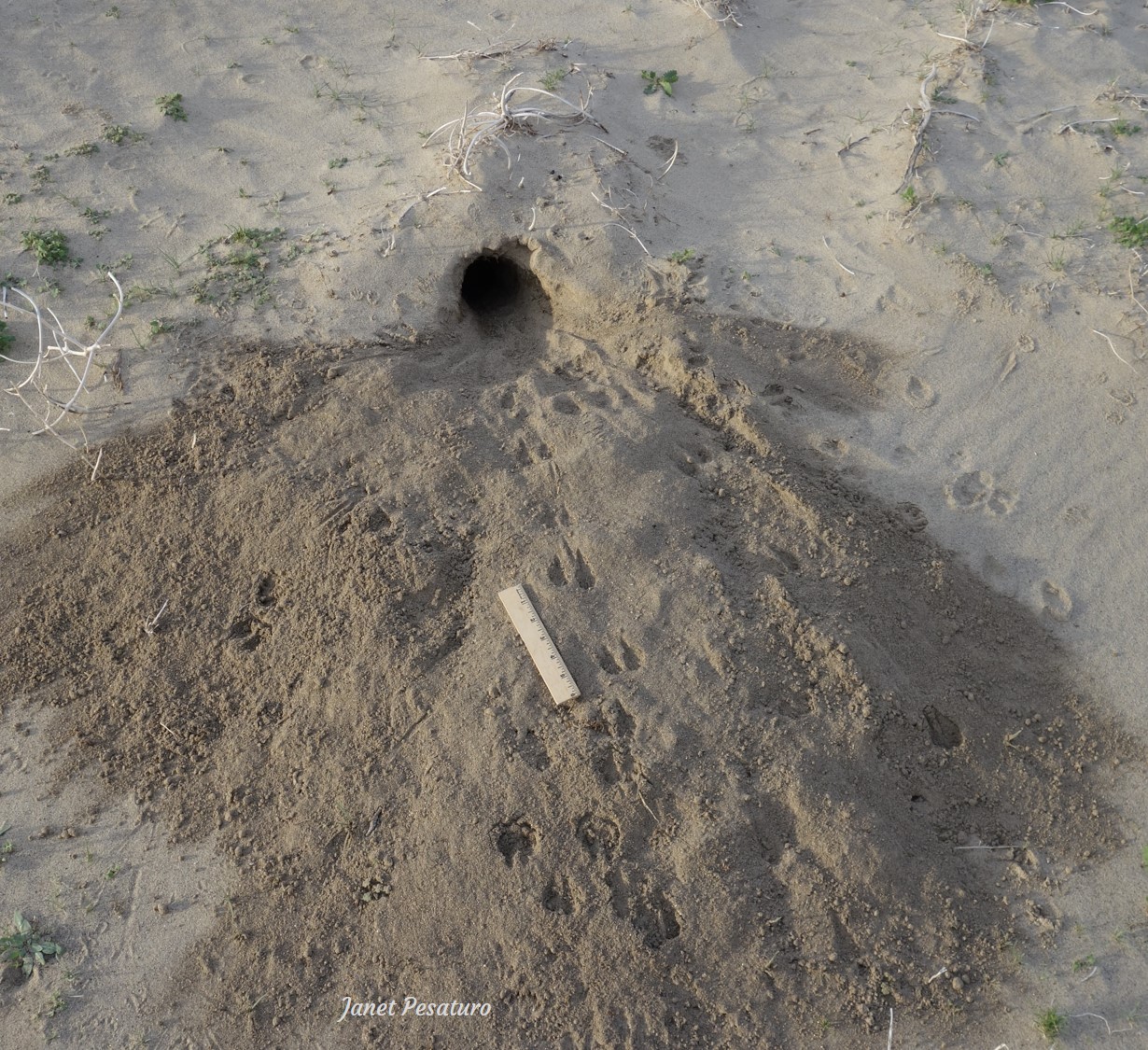
Banner-tailed kangaroo rat burrows
The banner-tailed kangaroo rat (D. spectabilis) lives in parts of AZ, NM, and TX, and makes one of the most distinctive burrow systems. It creates conspicuous mounds with 3-12 entry holes. For a 3 – 5 ounce rodent, these mounds are enormous – up to 4 feet high and 15 feet in diameter! When I first saw these impressive structures, I assumed they were created by larger animals, and that multiple individuals occupied each mound. Prairie dogs came to mind. But alas, the much smaller and much less social banner-tailed kangaroo rat makes them. And only one adult, or an adult female with young, occupies each mound.
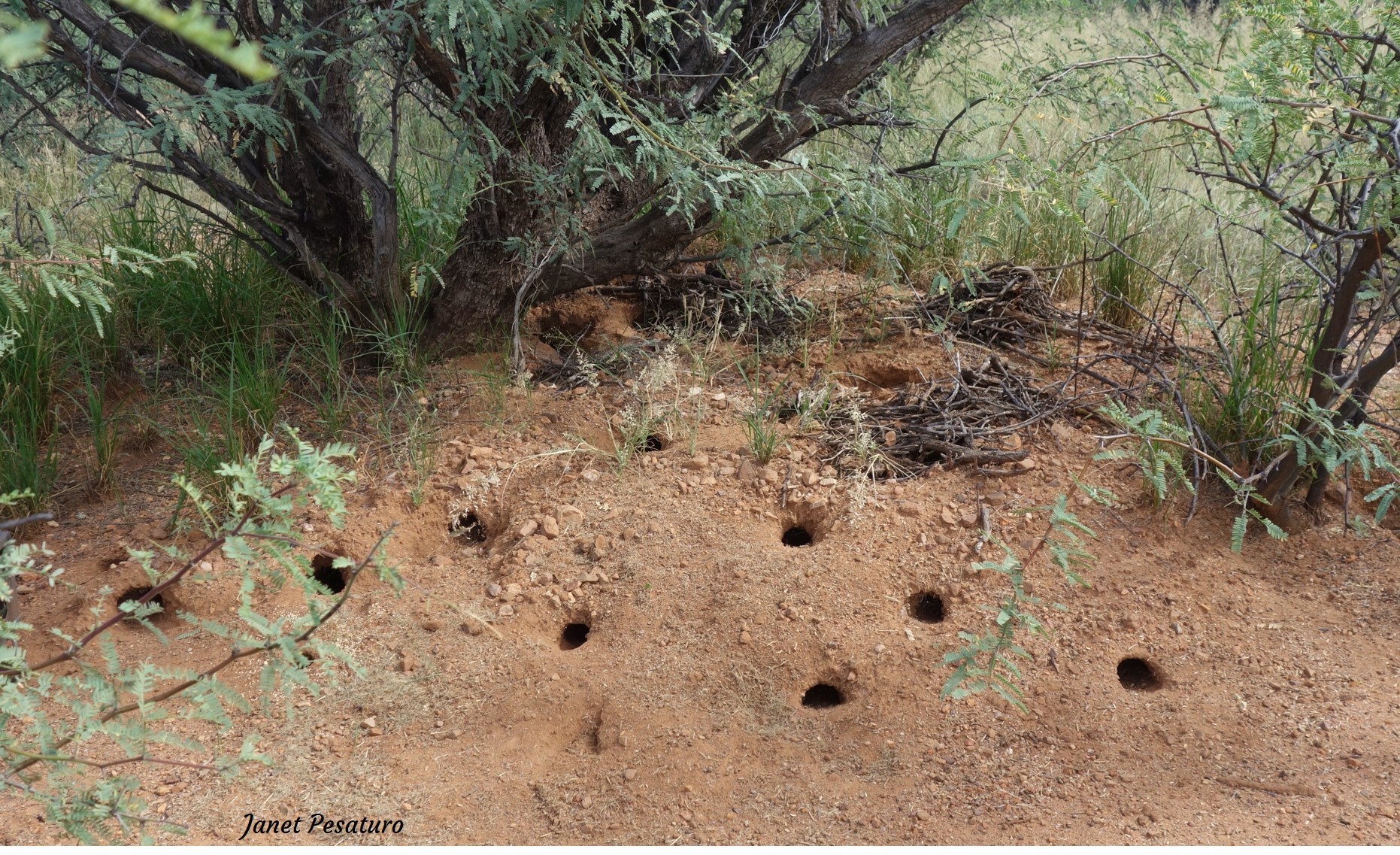
As one of the largest kangaroo rat species, the banner-tailed’s entry holes are 4 – 5.5 inches in diameter. That’s larger than you’d expect for the size of the animal, but perhaps repeated use accounts for that, since these burrows may be used by successive generations. The holes lead to a complex network of many tunnels, storage rooms, and side pockets. The extensive excavation necessary to create such a complex burrow system explains why the mound is so big. For some reason this species clears the vegetation around its home, making the mound even more conspicuous. Mounds may be out in the open or under a tree or shrubs (such as a mesquite or acacia).
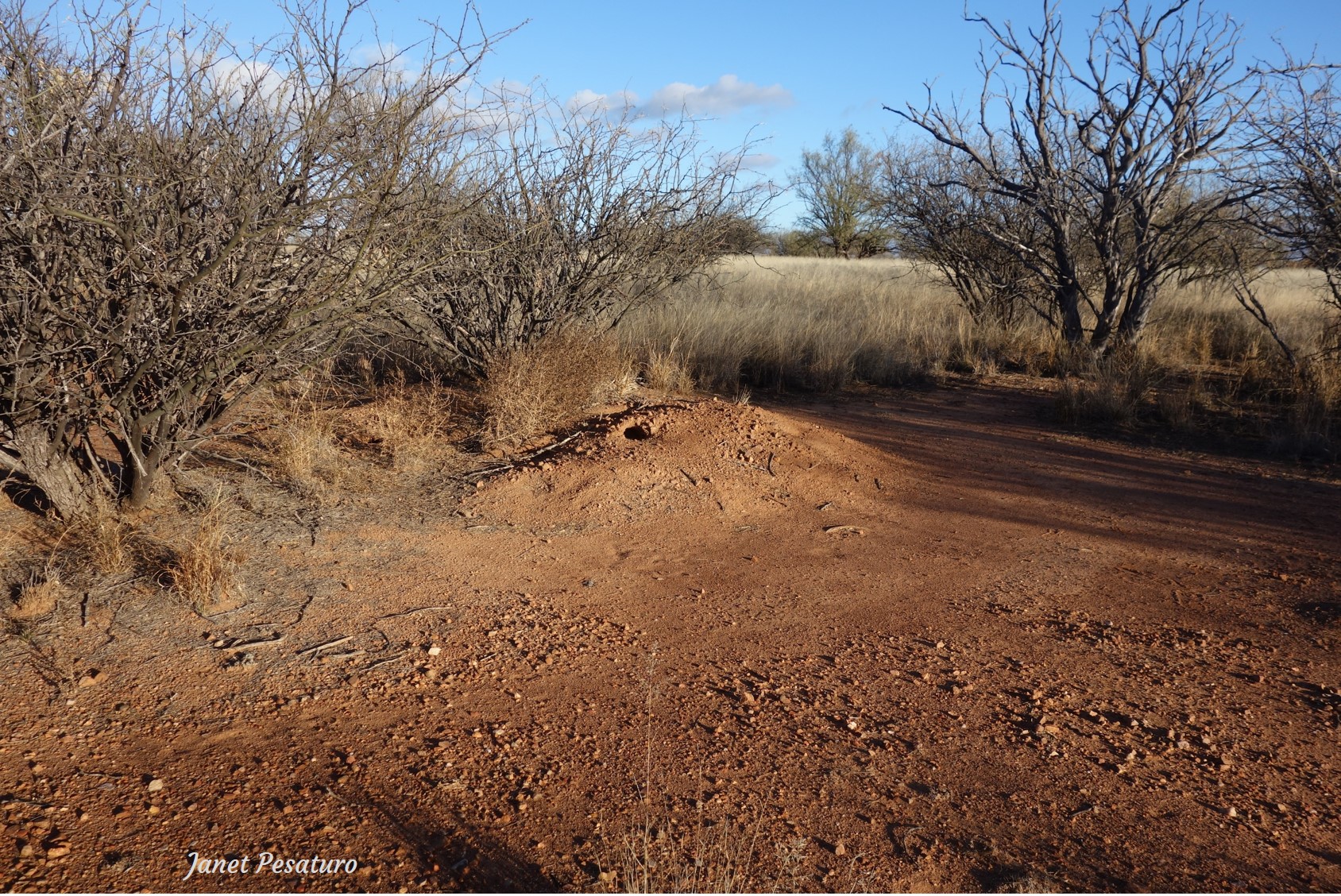
Desert kangaroo rat burrows
The desert kangaroo rat (D. deserti), also one of the larger species, inhabits the driest deserts, including Death Valley. It too creates complex burrow systems with multiple, large (3 – 5 inches in diameter) entry holes. But instead of a mound, the soil surface above the burrow is a lumpy, uneven area 10 – 30 feet across. I’m guessing that means D. deserti spreads its burrow over a wider area but doesn’t excavate as deeply as D. spectabilis. The holes may be out in the open or under a shrub – usually in the open, perhaps because shrubs are few and far between in its desert habitat.
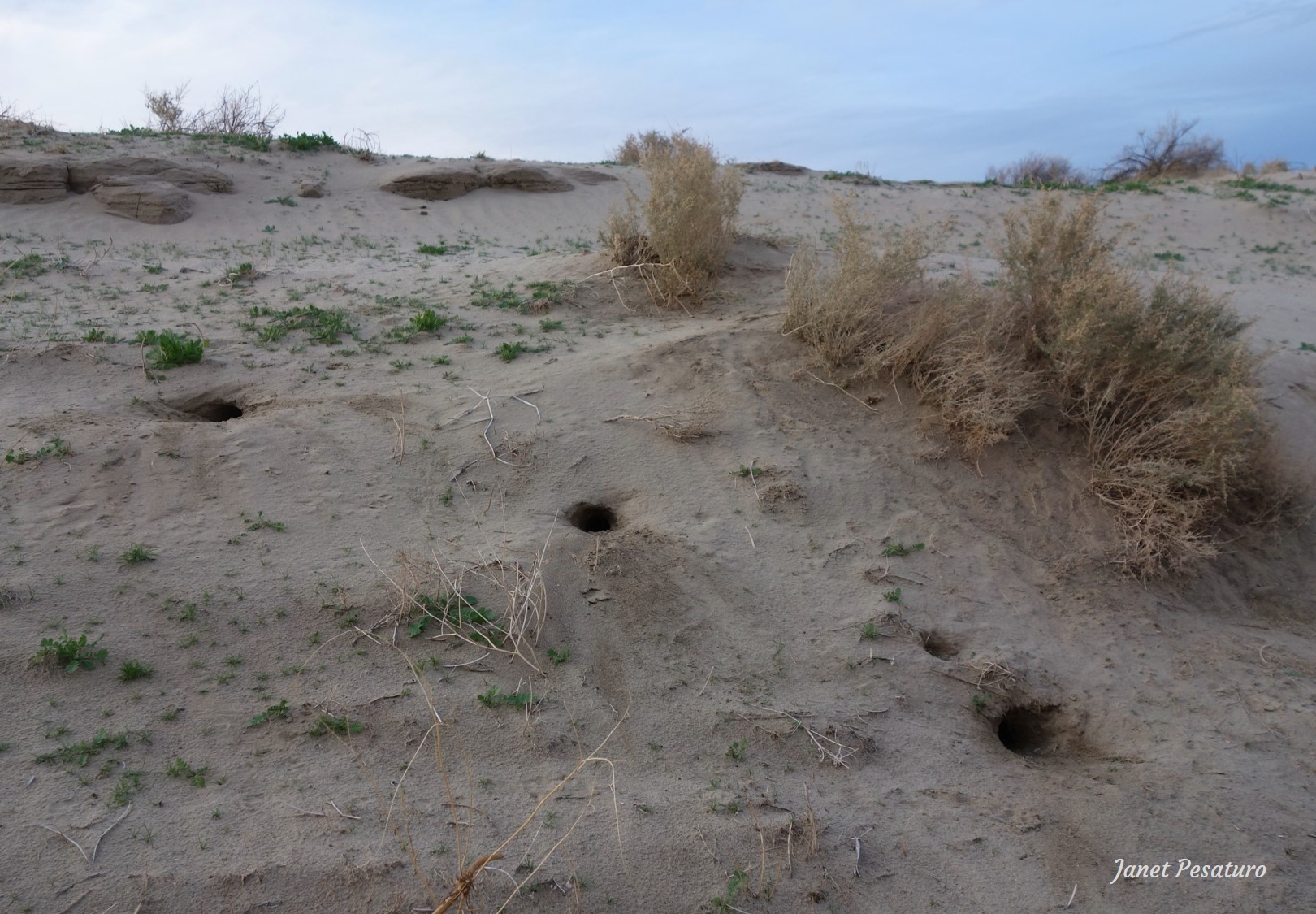
Ord’s kangaroo rat burrows
Ord’s kangaroo rat (D. ordii) is one of the smaller species. It constructs simple burrows under a shrub with 1 – 3 entry holes, each about 2 inches in diameter. It is sometimes said that these burrows are “mounded” but I think the reason for the mounding isn’t the excavation, since this species doesn’t need to excavate much to create it’s relatively short, simple tunnel. In this case the “mounding” is related to the fact that the burrow is under a desert shrub, and shrubs tend to hold on to the soil (sand) around them as wind and flood water carry away the sand in between them.
Compared to the burrows of the banner-tailed and desert kangaroo rats, those of Ord’s are rather subtle and unremarkable. All you see are a couple of little holes under a shrub, and since there a number of other small, burrowing mammals that make little holes under shrubs in the same desert ecosystem, Ord’s burrows don’t really scream “kangaroo rat”. For this species it’s especially helpful to look for tracks and dust baths. The latter will be covered in a future post.
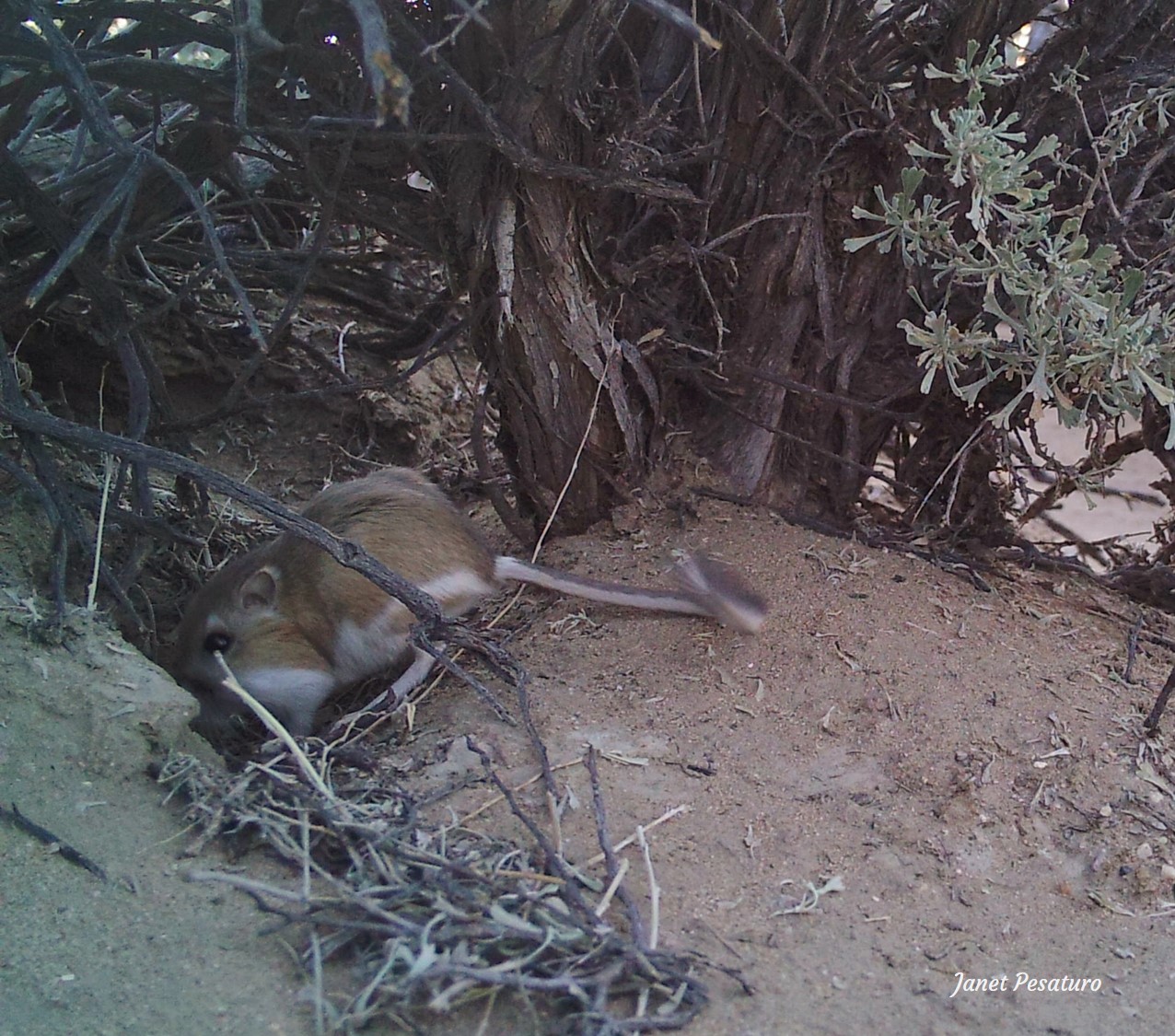
Correlating form with function
The above examples might give the impression that larger kangaroo rat species create complex burrows and smaller species create simple burrows. But that is not necessarily the case – there are large species that create simple burrows and small species that make complex burrows. I don’t actually know for sure what accounts for burrow complexity or simplicity but I am guessing it has to do with food availability and food storage strategy. Basically if there are serious seasonal food shortages, the animal needs to cache a lot of food. If it locates its caches in the burrow, then the burrow must have plenty of space for food storage.
Let’s take the banner-tailed kangaroo rat which has a large, complex burrow.. Within its range, the seeds of annuals are abundant in spring and seeds of grasses are abundant in fall. In summer and winter, on the other hand, preferred seeds are scarce. So, in spring the animal stores great quantities of annual seeds for summer consumption, and in fall it stores pounds of grass seeds for winter consumption. This species is a larder hoarder, meaning that it stores most if not all of its food in one place: its burrow. In fact, one Arizona burrow had over 12 pounds of food within storage chambers! Maybe it’s not too surprising, then, that this species excavates deep, complex burrow systems with many storage chambers.
A short, simple burrow is sufficient for species that cache a lot of their food outside the burrow, or that don’t need to cache much food at all. It will not need to cache much if preferred foods can be foraged year round, or if the animal is able to steal food from the caches of other species. For example, Merriam’s kangaroo rat (D. merriami) has a short, simple burrow. It caches some seeds in its burrow and some in multiple small holes scattered around its territory, making it both a larder hoarder and a scatter hoarder. It’s also a thief, and probably a good one, since scatter hoarding rodents are generally more effective thieves than larder hoarders.
Time-sharing burrows
Sometimes it appears that more than one species is using the same burrow. For example, I have seen several instances where tracks and/or camera trap data suggested that a white-tailed antelope ground squirrel and a kangaroo rat (probably Ord’s) entered and exited the same hole. I suspect that these animals were sharing only an entry hole, which branched into separate tunnels and chambers. It’s interesting that the squirrel is diurnal and the rat is nocturnal, as if the hole had a day shift and a night shift.
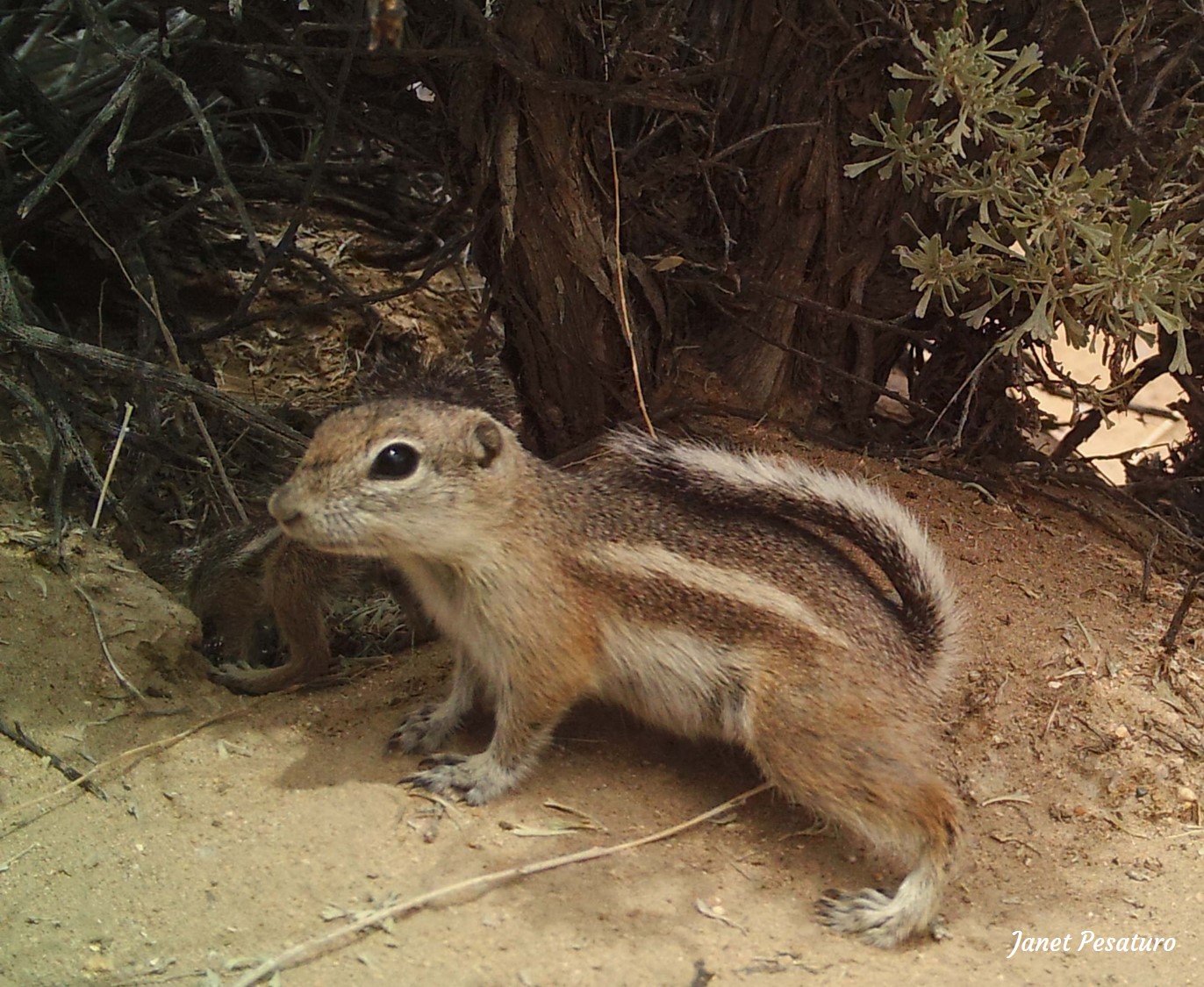
And at another burrow in Nevada sagebrush, I got the following video. I can’t be totally certain, but tracks and video footage suggested that both the rat and the squirrel were using the same burrow. The squirrel clearly entered and exited, but the rat only stuck its head in the hole. The camera was in place for only one night, though. There was at least one other entry hole, which the rat may have been using that night.
What do you know, or what would you like to know, about kangaroo rat burrows and behavior? Feel free to share your questions, knowledge, and observations in the Comment section below.
Sources
Best, T. L., N. J. Hildreth and C. Jones. “Dipodomys deserti.” Mammalian Species. 339 (1989): 1-8.
Garrison, T. E. and T. L. Best. “Dipodomys ordii.” Mammalian Species. 353 (1990): 1-10.
Jenkins, S. H., Rothstein, A. and W. C. H. Green. “Food Hoarding by Merriam’s Kangaroo Rats: A Test of Alternative Hypotheses.” Ecology. 76 (1995): 2470-2481.
Vorhtes, C. T. Life History of the Kangaroo Rat, Dipodomy spectabilis spectabilis Merriam, USDA Bulletin No. 1091. Agricultural Experimental Station, University of Arizona, 1922.
Wang, Z., B. Wang, X. Yi, C. Yan, L. Cao and Z. Zhang. “Scatter-hoarding Rodents are Better Pilferers than Larder-hoarders.” Animal Behaviour. 141 (2018): 151-159.
White, J. A. “Summer Burrows of Ord’s Kangaroo Rats (Dipodomys ordii) in Western Nebraska: Food Content and Structure.” Western North American Naturalist. 69 (2009): 469-474.

The Kangaroo Rats here on the Eastern Plains of Colorado use other animals’ burrows. We had a camera at one of those. First the badger lived in there for a short while and once the badger left, k-rat moved in. Single rat.
Very cool – I think in CO that would be Ord’s k rat, which is the one I saw a lot of in NV, where trail cam photos at two different old badger dens suggested a k rat was using it. However, since it wasn’t on video I couldn’t be 100% sure of that. Ord’s seems to be a versatile, adaptable species. It’s one of the more widespread k rats, living in a variety of habitats, so it’s not surprising it would make use of another animal’s burrow. I think I saw the same thing going on with Merriam’s K rat in southern Cal. Merriam’s is another widespread species that occupies a variety of habitats.
Banner-tailed k-rat mounds are used by lots of species, including other rodents, desert box turtles, lizards, and more.
Thank you – does not surprise me. So interesting how they use each other’s burrows. I’ve had trail cams at burrows of two different k rat species, badgers, and prairie dogs, and was fascinated to see a variety of species making use of them.
Janet- would I be able to use 2 of your pictures for a class I am teaching about desert animals? The pictures would be shown to kids ages 4-9!
Please and thank you!
-Ally
Hi Ally, I will respond by email. Thanks.